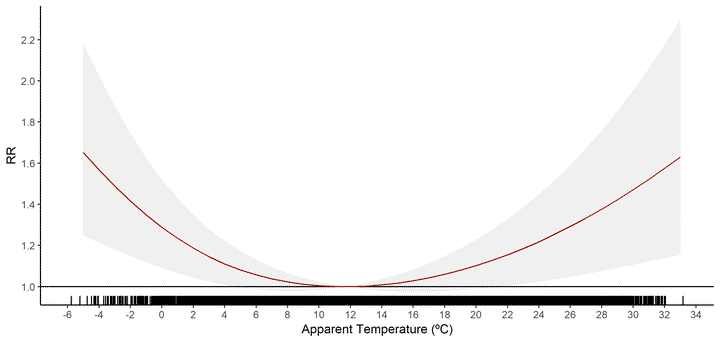A time series analysis of the relationship between Apparent Temperature, Air Pollutants and Ischemic Stroke in Madrid, Spain

Abstract
The understanding of the role of environment on the pathogenesis of stroke is gaining importance in the context of climate change. This study analyzes the temporal pattern of ischemic stroke (IS) in Madrid, Spain, during a 13-year period (2001-2013), and the relationship between ischemic stroke (admissions and deaths) incidence and environmental factors on a daily scale by using a quasi-Poisson regression model. To assess potential delayed and non-linear effects of air pollutants and Apparent Temperature (AT), a biometeorological index which represents human thermal comfort on IS, a lag non-linear model was fitted in a generalized additive model. The mortality rate followed a downward trend over the studied period, however admission rates progressively increased. Our results show that both increases and decreases in AT had a marked relationship with IS deaths, while hospital admissions were only associated with low AT. When analyzing the cumulative effects (for lag 0 to 14 days), with an AT of 1.7°C (percentile 5%) a RR of 1.20 (95% CI, 1.05-1.37) for IS mortality and a RR of 1.09 (95% CI, 0.91-1.29) for morbidity is estimated. Concerning gender differences, men show higher risks of mortality in low temperatures and women in high temperatures. No significant relationship was found between air pollutant concentrations and IS morbi mortality, but this result must be interpreted with caution, since there are strong spatial fluctuations of the former between nearby geographical areas that make it difficult to perform correlation analyses.